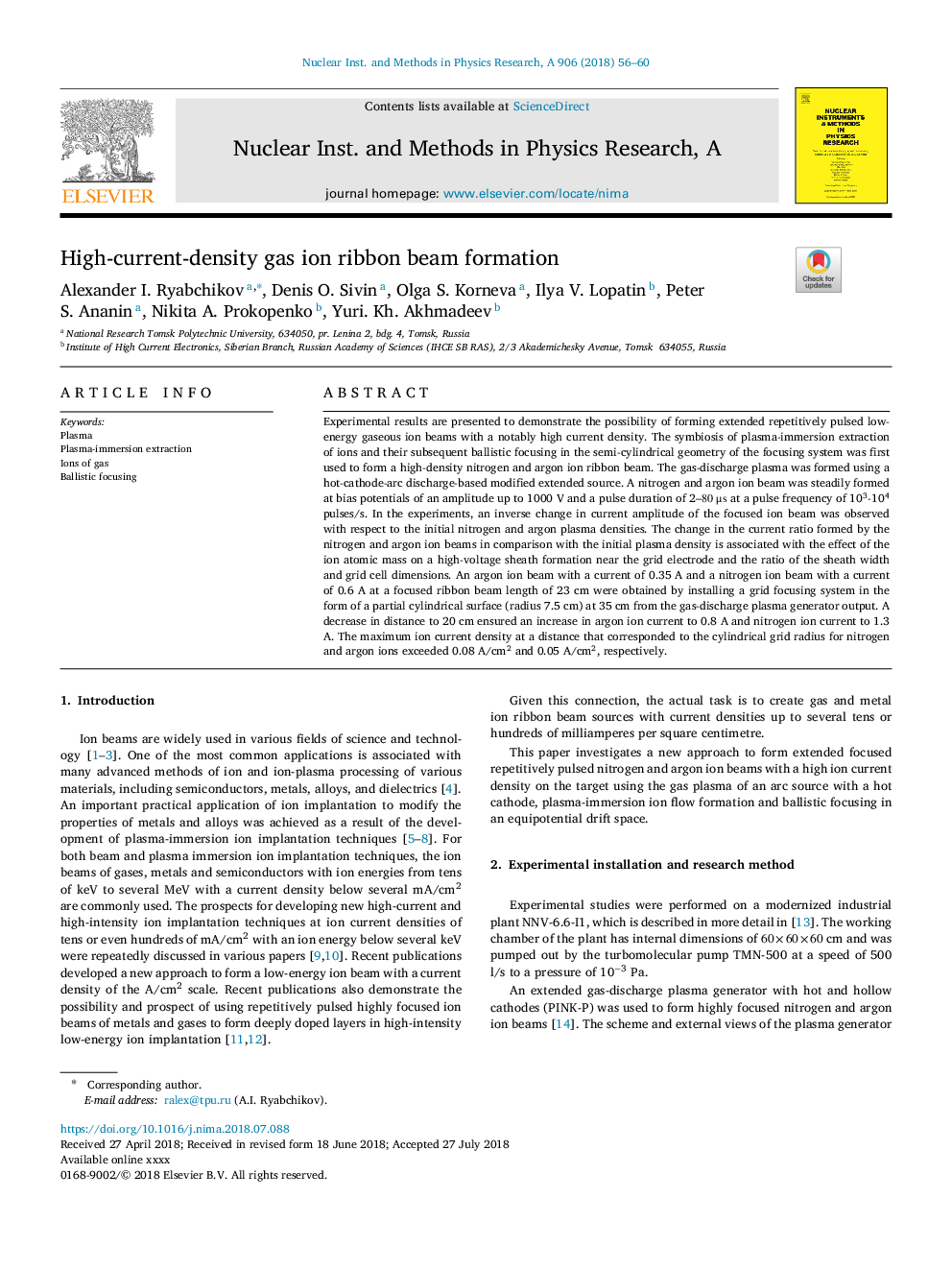| Article ID | Journal | Published Year | Pages | File Type |
|---|---|---|---|---|
| 8165840 | Nuclear Instruments and Methods in Physics Research Section A: Accelerators, Spectrometers, Detectors and Associated Equipment | 2018 | 5 Pages |
Abstract
Experimental results are presented to demonstrate the possibility of forming extended repetitively pulsed low-energy gaseous ion beams with a notably high current density. The symbiosis of plasma-immersion extraction of ions and their subsequent ballistic focusing in the semi-cylindrical geometry of the focusing system was first used to form a high-density nitrogen and argon ion ribbon beam. The gas-discharge plasma was formed using a hot-cathode-arc discharge-based modified extended source. A nitrogen and argon ion beam was steadily formed at bias potentials of an amplitude up to 1000 V and a pulse duration of 2-80μs at a pulse frequency of 103-104 pulses/s. In the experiments, an inverse change in current amplitude of the focused ion beam was observed with respect to the initial nitrogen and argon plasma densities. The change in the current ratio formed by the nitrogen and argon ion beams in comparison with the initial plasma density is associated with the effect of the ion atomic mass on a high-voltage sheath formation near the grid electrode and the ratio of the sheath width and grid cell dimensions. An argon ion beam with a current of 0.35 A and a nitrogen ion beam with a current of 0.6 A at a focused ribbon beam length of 23 cm were obtained by installing a grid focusing system in the form of a partial cylindrical surface (radius 7.5 cm) at 35 cm from the gas-discharge plasma generator output. A decrease in distance to 20 cm ensured an increase in argon ion current to 0.8 A and nitrogen ion current to 1.3 A. The maximum ion current density at a distance that corresponded to the cylindrical grid radius for nitrogen and argon ions exceeded 0.08 A/cm2 and 0.05 A/cm2, respectively.
Keywords
Related Topics
Physical Sciences and Engineering
Physics and Astronomy
Instrumentation
Authors
Alexander I. Ryabchikov, Denis O. Sivin, Olga S. Korneva, Ilya V. Lopatin, Peter S. Ananin, Nikita A. Prokopenko, Yuri. Kh. Akhmadeev,
